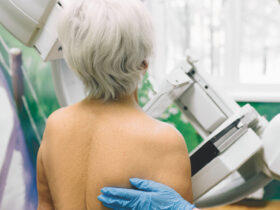By Dennis O. Sagini, MD
 Trigger finger is one of the most common hand conditions I treat in my practice. This painful condition occurs when inflammation narrows the space within the tendon sheath, impeding the smooth gliding of the finger’s flexor tendon. As a hand specialist with extensive experience treating this condition, I’d like to share insights on recognizing trigger finger and understanding your treatment options.
Trigger finger is one of the most common hand conditions I treat in my practice. This painful condition occurs when inflammation narrows the space within the tendon sheath, impeding the smooth gliding of the finger’s flexor tendon. As a hand specialist with extensive experience treating this condition, I’d like to share insights on recognizing trigger finger and understanding your treatment options.
Recognizing Trigger Finger
The hallmark symptom of trigger finger is the catching or locking sensation when attempting to straighten a bent finger. Patients often report their finger becomes “stuck” in a bent position and then suddenly snaps straight—similar to pulling and releasing a trigger, hence the name.
Early symptoms typically include:
. Pain or tenderness at the base of the finger or thumb
. A tender nodule (bump) in the palm
. Stiffness, especially in the morning
. Clicking or popping sensation when moving the finger
In advanced cases, the finger may become locked in a bent position, requiring manual straightening with the other hand. While any finger can be affected, the ring finger and thumb are most commonly involved. The condition is more prevalent in women and individuals with diabetes, rheumatoid arthritis, or those whose occupations involve repetitive gripping.
Diagnostic Approach
Diagnosis of trigger finger is primarily clinical. During your office visit, I will:
. Evaluate your medical history, focusing on hand-related symptoms
. Examine your hand for nodules, tenderness, and catching during movement
. Ask you to flex and extend your fingers to observe any triggering
. Palpate the affected finger to identify thickening of the tendon sheath
Unlike many orthopedic conditions, trigger finger rarely requires imaging studies. X-rays, MRIs, or ultrasounds are only ordered if there’s suspicion of other underlying conditions or when the diagnosis remains unclear.
Treatment Options
Treatment for trigger finger follows a stepwise approach, beginning with conservative measures:
1. Rest and Activity Modification: Avoiding activities that aggravate symptoms is the first step. Temporary splinting may help by keeping the affected finger extended, particularly overnight.
2. Anti-inflammatory Medications: Over-the-counter NSAIDs like ibuprofen can reduce inflammation and alleviate pain.
3. Corticosteroid Injections: In my experience, a precisely placed corticosteroid injection provides relief in approximately 70% of cases. This office procedure takes just minutes and can provide long-lasting improvement.
4. Surgical Release: When conservative treatments fail, a simple surgical procedure called “trigger finger release” is highly effective. This outpatient procedure involves making a small incision to divide the constricted portion of the tendon sheath, allowing free tendon movement.
The surgical procedure typically takes less than 20 minutes under local anesthesia. Most patients regain full finger mobility within a few weeks, though complete recovery may take 4-6 weeks.
When to Seek Care
I advise patients to seek evaluation if they experience persistent catching, popping, or locking of any finger. Early intervention typically leads to quicker resolution with less invasive treatments. Diabetic patients should be particularly vigilant, as they’re more prone to developing trigger finger and may require more aggressive treatment approaches.
With proper diagnosis and appropriate treatment, most patients with trigger finger achieve complete resolution of symptoms and return to normal hand function. As a hand specialist, I find few conditions as consistently responsive to treatment as trigger finger, making it one of the most rewarding conditions to address in my practice.
Dennis O. Sagini, MD
TDr. Sagini is an orthopedic surgeon with specialization in hand and upper extremity surgery. He specializes in arthritis of the hand, nerve compression, muscle and tendon injury, fracture care, and upper extremity dysfunction.
He completed his Bachelors of Science in Microbiology from the University of Oklahoma in Norman, Oklahoma in 1998 and his Doctor of Medicine at Temple University in Philadelphia, PA in 2002. It was during medical school training that Dr. Sagini developed an interest in orthopaedic surgery. His residency in orthopaedic surgery was completed at Howard University Hospital, Washington, DC. Dr. Sagini completed his fellowship training in Hand and Upper Extremity surgery at the University of Pittsburgh Medical Center in Pittsburgh, PA.
Dr. Sagini is a member of the American Academy of Orthopaedic Surgeons, the American Medical Association, the Florida Medical Association, and the American Society for Surgery of the Hand.
Dr. Sagini is active in research and community service and has a passion for overseas medical mission work. He also enjoys running, traveling, listening to music, cooking, tennis, and spending time with his family and friends.
239-302-3216 | saginimd.com
13691 Metro Pkwy, Suite 400
Fort Myers, FL 33912









